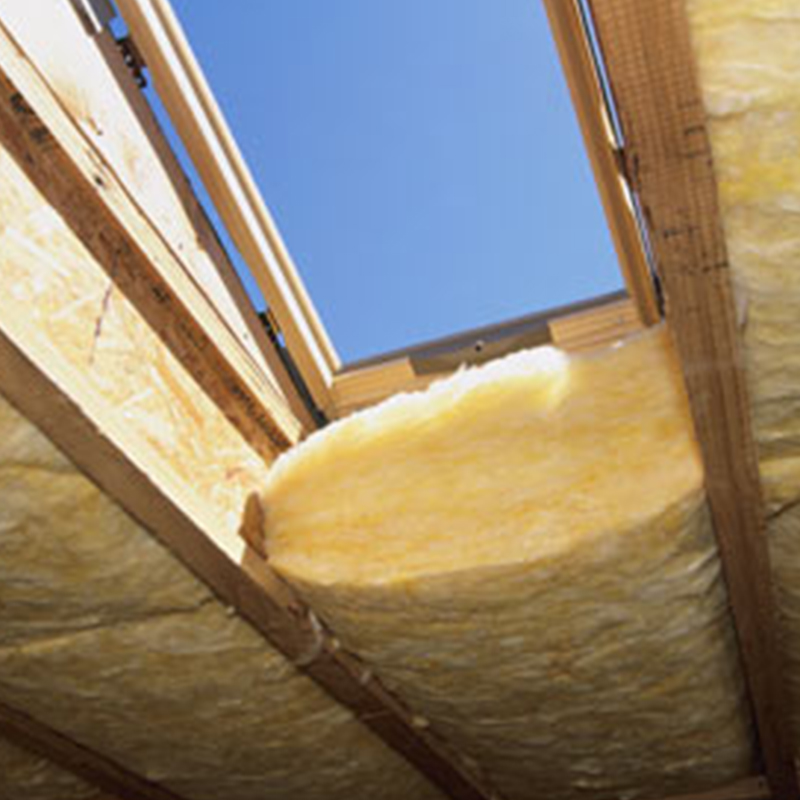Is Rock Wool Insulation Itchy? A Health and Safety Guide
2025-11-15
If you're considering using rock wool insulation materials for your house or project, one of the most common questions to come to your mind will be: is rock wool insulation material itchy? The short answer to this would be yes; it may cause itching. However, further understanding of the causes behind this and the level of risk, and how to handle it safely, will support informed decisions and help protect health.

Why does rock wool make people itch?
Rock wool, also called mineral wool, is produced by melting basalt and slag at high temperatures and then spinning the content into fine fibers. It is the tiny fibers that are at the root of the problem.Similar to glass wool fibers, rock wool fibers are at the microscopic level, and they have a needle-like appearance. These can pierce through your skin pores and hair follicles upon coming in contact, thus causing mechanical irritation. Your body may interpret this kind of irritation as an itching or stinging sensation, and sometimes it may even appear as a mild rash, called "fiberglass itch."
Key data: The North American Insulation Manufacturers Association estimates that the diameters of rock wool fibers are in the range of 3 to 5 micrometers. Comparatively, estimates of diameter for human hair are about 70 micrometers. It is this very thin and sharp quality that lets the fibers easily become embedded in skin.
Rock Wool versus Glass Wool: Which One Is More itchy?
This is a common comparison: many professional installers feel that rock wool fibers are coarser and heavier compared to the fibers of traditional glass wool; hence, they are less likely to float in the air for a long time, and the "itchy feeling" in case of direct contact may be slightly milder. Let this by no means imply that rock wool is not itchy; it remains a highly irritating material and requires equal caution in handling.
Health and Safety: Considerations Beyond Itching
Although itching is temporary and uncomfortable, the more important health issue relates to respiratory safety.
Short-term respiratory irritation: During installation, stirring rock wool can send fibers and dust into the air. Inhaling these may temporarily irritate the throat, nose, and lungs and could lead to coughing, sneezing, or an itchy throat. This effect can be more striking for patients with asthma or bronchitis.
Long-term risks and official stance: This is the issue which troubles most people. IARC of WHO classifies "artificial glass fibres" including rock wool into the category "Group 3: Not classified as carcinogenic to humans". It in effect means that there is at present inadequate evidence to prove its being carcinogenic to humans.
This is in contrast to asbestos, which is a known and deadly carcinogen. The asbestos fibers are crystalline, needle-like, and biologically persistent; that is, once they enter the lungs, they cannot be decomposed or cleared. The rock wool fibers, on the other hand, are amorphous and biosoluble-that is, they dissolve in body fluids over time and are cleared by the body.
Key data: One report published in the International Journal of Inhalation Toxicology calculated the half-life of rock wool fibers in lung fluid at about 40 days, compared with decades or a lifetime for asbestos fibers.
Four Golden Rules for Safely Handling Rock Wool.Whether you are doing it yourself or supervising the construction, these safety guidelines must be followed: Wear full personal protective equipment
Gloves: thick work gloves need to be worn.
Long-sleeved shirts and pants: Wear tight-fitting clothes that do not absorb fibers easily and that cover all skin.
Goggles: to prevent fibers from getting into the eyes
Dust mask (respirator) An N95 grade mask minimum is called to filter the fibres in the air correctly.
The rock wool scraps should be cleared away properly, in accordance with the local regulation and never disposing randomly.
Post-contact treatment: The right form of treatment for itching skin, without scratching it directly or washing it with water because the fibers will only embed deeper, is: Rinse with cold water and mild soap.
Apply tape: Apply wide tape to the affected area and remove it rapidly so as to pull off the fibers on the skin surface.
Work clothes should be rinsed separately in cold water, immediately after work is finished, and then washed.
Conclusion: Rock wool insulation materials cause itching due to their microscopic fiber structure. However, through proper safety precautions, this discomfort can be fully avoided and managed. More importantly, from the point of view of long-term health, based on evidence till date, rock wool is not considered a carcinogen. As a matter of fact, the potential risk is much lower than in the case of asbestos, since rock wool fibers are soluble in the body.
Rockwool enjoys several unparalleled advantages, such as excellent fire resistance, sound insulation, and heat preservation. As long as full respect and proper precautions are considered in its installation, one is safe and may derive utmost benefit from its usefulness.
contact us











